Description
The Sharknose Goby, Elacatinus evelynae, is a captivating fish that showcases a stunning blend of colours. It has a slender body with a vibrant yellow colouration, adorned with horizontal blue stripes running across its length. At maturity, it reaches a maximum size of around 2 inches (5 centimetres), making it an ideal addition to smaller aquarium setups.
Natural Habitat
In its natural habitat, the Sharknose Goby dwells among coral reefs, specifically in the Western Atlantic Ocean. It prefers to inhabit shallow waters near the substrate, frequently found in close proximity to stony corals. The fish tends to navigate intricate reef structures, utilizing the cover provided by corals and rocky crevices.
Keeping Sharknose Goby Healthy:
Keeping the Sharknose Goby healthy requires providing suitable conditions within the aquarium. Fortunately, this fish has a moderate care level, making it suitable for both beginners and experienced aquarists. With proper care and attention, it thrives in a home aquarium, adapting well to captivity.
Special Requirements and Feeding
The Sharknose Goby has a predominantly carnivorous diet. It eagerly consumes a variety of small invertebrates, such as copepods, amphipods, and small crustaceans. To ensure its nutritional needs are met, offering live or frozen foods rich in protein is recommended. Providing a diverse diet contributes to the fish’s overall health and vitality.
How Many Should I Keep?
Due to its peaceful nature and small size, the Sharknose Goby can be kept in small groups or pairs within a well-established aquarium. A general guideline is to provide a minimum tank size of 10 gallons (38 litres) per individual fish. Having multiple individuals not only adds visual interest but also encourages natural behaviour and social interactions.
Lighting Preference
The Sharknose Goby thrives under moderate lighting conditions in the aquarium. Mimicking the natural lighting found in its coral reef habitat is beneficial. Providing a combination of white and blue spectrum lights helps recreate the shimmering effect experienced in the wild, enhancing the fish’s vibrant colours.
Suitable Tank Mates
When selecting tank mates for the Sharknose Goby, it is essential to consider their compatibility. This species is generally peaceful and gets along well with other non-aggressive fish that share its water requirements. Suitable tank mates may include small gobies, dartfish, blennies, and peaceful damselfish. However, caution should be exercised when introducing it to larger or more aggressive species.
Reproduction in the Wild:
In the wild, Sharknose Gobies form monogamous pairs, with a single male and female bonding together for reproduction. The male establishes a territory, often a small area within a coral reef or rocky substrate, where he will attract a female. The male showcases his vibrant colours and performs intricate courtship displays to impress the female.
Once courtship is successful, the pair engages in a delicate dance near a crevice or cave within their territory. The female releases her eggs, and the male simultaneously releases his sperm, resulting in external fertilization.
Elacatinus evelynae in Captivity:
- Set up:
Creating the ideal environment for breeding Sharknose Gobies begins with setting up a separate breeding tank. This tank should have similar water parameters to the main aquarium, including temperature, salinity, and pH. Adding live rock and creating ample hiding places with small crevices and caves is crucial to mimic their natural habitat.
- Courtship/Spawning:
Courtship and spawning in Sharknose Gobies involve an intricate dance between the male and female. The male establishes a territory and entices the female through vibrant displays of colour and movements. Once courtship is successful, the pair will engage in a hovering behaviour near a crevice or cave, where the female will release her eggs and the male will simultaneously release his sperm to fertilize them.
- Rearing:
After spawning, it is essential to promptly remove the adults from the breeding tank to prevent predation on the eggs. Maintaining optimal water conditions, including stable temperature and water quality, is crucial for successful egg development. The eggs will hatch into larvae within a few days.
Sexual Dimorphism:
Sexual dimorphism in Sharknose Gobies is not readily apparent, as both males and females possess similar body shapes and colour patterns. However, during breeding, males may exhibit more vibrant colours and display increased territorial behaviour to attract a female.
Distribution:
The Sharknose Goby (Elacatinus evelynae) originates from the Western Atlantic Ocean, primarily found in regions such as the Caribbean Sea and the Gulf of Mexico.
Summary:
Breeding Sharknose Gobies in captivity requires careful attention to their specific needs. Creating a suitable breeding tank with hiding places and stable water conditions is essential. The courtship and spawning process involves an intricate dance, with the male enticing the female and subsequent fertilization occurring externally. Understanding sexual dimorphism and distinguishing between males and females can be challenging. The Sharknose Goby is originally distributed in the Western Atlantic, but the tank bred strains available in the aquarium trade are captive bred. By understanding their natural breeding behaviour and requirements, aquarists can successfully reproduce and appreciate the beauty of this fascinating species.
The Fish pictured here are representative only and the livestock you receive may vary in pattern, coloration, and shape.

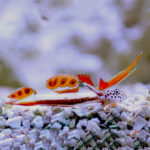
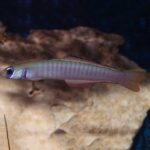
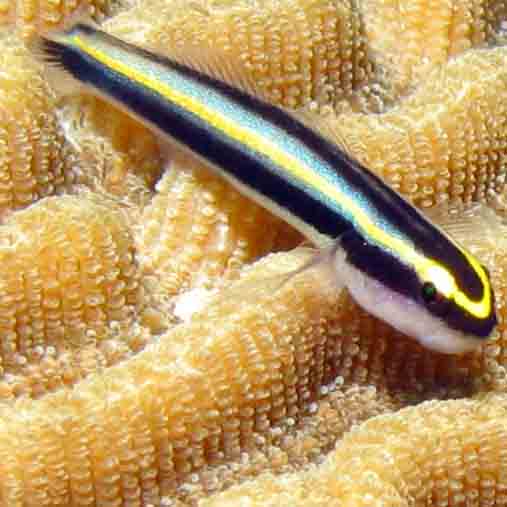


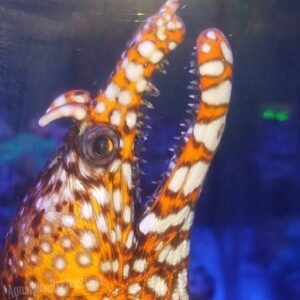
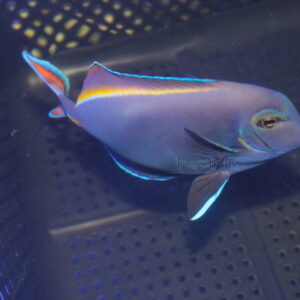
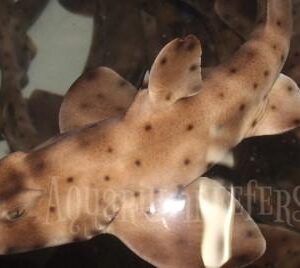
Reviews
There are no reviews yet.